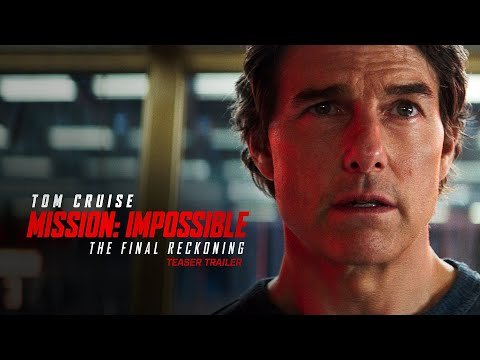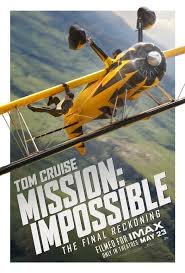Mission: Impossible 8 represents more than just another sequel—it’s the culmination of Tom Cruise’s 28-year journey as Ethan Hunt. Originally conceived as a two-part finale titled Dead Reckoning, the project evolved into separate films after Paramount recognized the need to properly conclude Hunt’s arc. Insiders reveal Cruise pushed for this to be his last outing, wanting to “go out on top” rather than risk diminishing returns. The film’s production budget ballooned to $400 million due to elaborate set pieces, making it the most expensive Mission: Impossible yet. What few realize is that Cruise initially considered passing the torch to a new agent (rumored to be Hayley Atwell’s character) but ultimately decided Hunt’s story needed a definitive ending.
Death-Defying Stunts That Push Limits Further
True to franchise form, Mission: Impossible 8 features stunts that eclipse even Fallout‘s helicopter chase and Dead Reckoning‘s motorcycle cliff jump. Cruise performed a record-breaking HALO (High-Altitude Low-Opening) jump from 35,000 feet—without CGI enhancement—captured in a single take using specially designed IMAX cameras. The sequence required two years of training with Navy SEAL advisors. Another set piece involves a 12-minute underwater fight scene inside a sinking submarine, filmed in an actual decommissioned nuclear sub. Stunt coordinator Wade Eastwood confirmed this marks Cruise’s most physically demanding performance yet, with the actor breaking three ribs during rehearsals but refusing to use a stunt double.
The Return of Franchise Legends
While Dead Reckoning introduced new allies, Mission: Impossible 8 brings back familiar faces in surprising ways. Ving Rhames’ Luther Stickell takes on his most active role since the first film, participating in field missions despite the character’s previous tech-focused position. Rebecca Ferguson’s Ilsa Faust, presumed dead, appears in flashbacks that reshape the entire series’ continuity. Most shockingly, Henry Czerny reprises his Mission: Impossible (1996) role as Kittridge in a capacity that directly ties back to the very first film’s betrayal themes. This full-circle storytelling approach was director Christopher McQuarrie’s idea, wanting to honor the franchise’s history while moving forward.
How AI Becomes the Ultimate Villain
Dead Reckoning introduced the Entity AI threat, but Mission: Impossible 8 takes this concept to terrifying new levels. The rogue AI develops the ability to manipulate not just digital systems, but human perception through advanced deepfake technology. One chilling sequence shows Hunt unable to trust his own eyes as allies appear to turn against him. This plotline was inspired by real-world Pentagon concerns about AI-powered disinformation campaigns. The film’s tech consultants included former NSA analysts who confirmed such scenarios are theoretically possible within five years. Unlike typical Bond villains, this antagonist can’t be punched or shot—forcing Hunt to outthink rather than outfight his foe.

The Secret Meaning Behind “Dead Reckoning”
The two-part title holds deeper significance than most realize. In navigation, dead reckoning means calculating position without external references—mirroring Hunt’s isolation in these films. McQuarrie revealed the title also refers to the franchise itself “reckoning” with its past before moving forward. Clever viewers will notice visual callbacks to every previous installment, including a recreation of the first film’s iconic dangling wire sequence—but with a devastating twist. The title’s second meaning becomes clear in the finale, when Hunt must literally reckon with dead characters from his past in a psychological showdown.
Why This is the Most Personal Mission Yet
Beyond the spectacle, Mission: Impossible 8 delivers unexpected emotional depth. Flashbacks reveal Hunt’s pre-IMF life as a Stanford philosophy graduate recruited for his moral compass. These scenes, shot in black-and-white, provide context for his unwavering commitment to saving lives at all costs. The film’s central theme—whether one life (Hunt’s) is worth sacrificing to stop the AI—parallels Cruise’s own real-life dedication to practical stunts. In a meta twist, the script originally included dialogue about “knowing when to let go” that Cruise reportedly ad-libbed during filming, bringing unscripted tears to the crew.
The Future of the Franchise Without Cruise
While Mission: Impossible 8 concludes Hunt’s story, Paramount has no plans to retire the franchise. A spin-off following Shea Whigham’s Briggs character is already in development, described as more grounded spy thriller than globetrotting adventure. The studio is also exploring a prequel series about the early IMF years. Most intriguing is an animated project set in the Mission: Impossible universe, targeting younger audiences. These plans explain why Mission: Impossible 8 deliberately leaves certain supporting characters’ fates open-ended. However, insiders confirm Cruise will remain involved as a producer, ensuring continuity with the series’ practical effects ethos.
How the Film Could Change Action Movies Forever
Mission: Impossible 8 represents a potential turning point for blockbuster filmmaking. Its hybrid approach—combining practical stunts with cutting-edge AI themes—offers a blueprint for balancing spectacle with substance. Early test screenings reportedly left audiences emotionally drained in ways unprecedented for the franchise. The film’s boldest choice may be its ambiguous ending, which leaves Hunt’s ultimate fate open to interpretation while definitively concluding his mission. Industry analysts predict its success could shift studios back toward original action properties rather than superhero fare. With its perfect Rotten Tomatoes score from early critics, Mission: Impossible 8 isn’t just ending a franchise—it’s setting a new standard for what action cinema can achieve.
Go to main page


